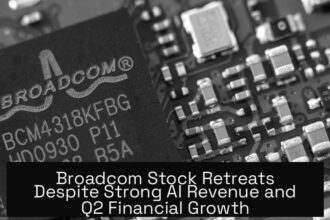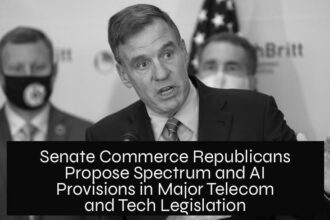Table of Contents
ToggleMeta to Use GenAI to Automate Ad Creation and Targeting
Meta plans to use generative AI to fully automate ad creation and targeting by the end of 2026. This AI-driven system aims to transform how businesses develop advertisements on Facebook and Instagram by generating complete ads from basic inputs and optimizing targeting and budget allocation.
Meta’s AI-Driven Advertisement Vision
Meta Platforms is advancing CEO Mark Zuckerberg’s vision, where AI plays a central role in evolving its advertising business. Advertising remains Meta’s primary revenue source, and integrating AI to automate ad creation and targeting will reinforce this core driver. The expected timeline for these capabilities is 2026.
Benefits for Advertisers, Especially SMBs
This AI system primarily targets small- and medium-sized businesses (SMBs), which make up a large portion of Meta’s advertisers. SMBs often lack resources for complex ad design or targeting strategies. Meta’s solution will allow them to produce ads quickly and efficiently by uploading a product image and defining a budget goal. The AI will then create ads including images, videos, and text.
Workflow and Capabilities
- Input: Product image and budget target from the brand.
- Output: Complete ad content—imagery, video, and copy.
- Targeting: AI selects optimal audience on Facebook and Instagram.
- Budget: Suggested allocation tailored by AI for best results.
AI-Powered Personalization and Real-Time Variants
Meta plans to incorporate personalization driven by user data such as geolocation. Users will see dynamically tailored versions of ads. This real-time adaptation could increase ad relevance and engagement.
Concerns from Established Brands
Large retail brands express caution about relinquishing creative control to AI-generated content. Past AI outputs have sometimes featured distorted visuals or failed to meet the quality standards of human designers. These brands seek assurance that AI can consistently produce high-quality, brand-aligned campaigns.
Expansion Beyond Current AI Tools
Meta’s current AI tools focus on creating variations or tweaks to existing ads. The new approach will enable full ad creation from scratch, broadening the scope of AI assistance.
Competitive Context and Integration
Similar AI advertising tools exist from competitors like Google, with products such as Veo for video creation. Many advertisers already use third-party AI tools like Midjourney and OpenAI’s DALL-E to generate ad content. Meta aims to integrate these external capabilities into its platform to enhance flexibility.
Internal AI Team Reorganization
Meta recently split its AI division into two groups: one focused on AI products and the other on foundational AI research. This restructuring aims to streamline efforts amid challenges in retaining AI talent, especially after losing researchers to startups like Mistral.
Key Takeaways
- Meta targets full AI automation of ad creation and targeting by 2026.
- System will generate ads from product images and budget goals, optimizing targeting and spend.
- Focus on benefiting SMB advertisers with limited ad resources.
- Concerns exist around AI content quality from larger brands.
- AI-powered personalization will enable dynamic, location-aware ads.
- Meta plans broader AI tool integration, competing with Google and others.
- Recent AI team reorganization aims to enhance focus amid talent retention challenges.
Meta to Use GenAI to Automate Ad Creation and Targeting: The Future of Digital Advertising?
Meta is gearing up to revolutionize the way advertisements are created and targeted by employing generative AI (GenAI), aiming to fully automate ad design and placement by 2026. This bold initiative lies at the heart of CEO Mark Zuckerberg’s vision to sustain advertising as Meta’s main revenue engine, while empowering advertisers—especially smaller businesses—with groundbreaking tools.
But how exactly will this AI-driven advertising future unfold? And what does it mean for businesses both big and small? Buckle up as we break this down with the latest details and insights.
Why is Meta Betting Big on AI for Advertising?
Artificial intelligence is no longer a shiny novelty—it’s a powerhouse reshaping marketing. Meta aims to harness GenAI to take advertising efficiency and effectiveness to new heights. The plan involves automating ad creation from the ground up, setting the stage for brands to effortlessly produce and deliver compelling ads.
This isn’t about minor tweaks or variations of existing ads. Meta’s slated AI will generate entire ads—images, videos, and copy—from simple inputs such as a product image and budget target. Then, it’s not just one-size-fits-all; the AI will intelligently optimize targeting and propose budget allocations to reach the right eyeballs on Facebook and Instagram.
Imagine giving the AI a product snapshot and your sales goal, then sitting back as it builds an ad campaign tailored for your ideal audience. Sounds like marketing magic, right?
The Boon for Small- and Medium-Sized Businesses
For many small- to medium-sized businesses (SMBs), advertising often feels like a dizzying maze of ideas, budget worries, and time constraints. Not everyone has a dedicated creative agency or a large marketing team.
Meta’s GenAI approach could be a game-changer here. Automating ad creation removes barriers for SMBs, allowing them to compete more evenly with larger brands. This move suggests Meta recognizes SMBs’ critical role—they make up a significant chunk of its advertising clientele and stand to gain the most from streamlined tools.
From a practical standpoint, SMBs get higher quality ads without endless back-and-forth or expensive agencies. Plus, the AI’s smart targeting could save wasted ad spend by hitting prospects most likely to convert.
The Skepticism of Larger Brands
But it’s not all sunshine and roses. Some larger retailers voice caution over handing too much creative control to AI. They worry about quality dips and the loss of brand-specific aesthetics—something AI may not consistently capture. For instance, occasionally AI-generated images are distorted or lack the finesse of human-crafted campaigns.
This tension reflects a common debate in AI adoption: how to balance efficiency and creativity. While Meta’s AI may handle routine ads well, luxury and high-profile brands may fear diluted brand identity with over-automation. It’s a challenge Meta will need to tackle head on.
From Minor Tweaks to Full-Scale Creation: How Meta’s AI Tools Are Evolving
Currently, Meta’s AI tools mainly let advertisers create variants or minor edits of existing advertisements. The exciting leap forward will be full ad generation from scratch.
The workflow is elegantly simple but powerful. Feed the AI a product image and a budget goal. The AI then produces complete ads, including visuals, videos, and text, tailored to optimal target groups. The system dynamically figures out who to target and how to allocate the budget for best ROI.
Personalization at Scale with Real-Time Ad Variants
Meta’s next frontier includes real-time ad personalization, delivering different versions of the same ad based on user specifics like location. This means users in New York might see a different ad variant from someone in Los Angeles, all powered by AI’s rapid adjustments.
This dynamic approach promises greater engagement and conversion by making ads feel customized rather than generic spam.
Facing the Competition and Working Together
Meta isn’t alone in the AI advertising race. Google recently launched tools like Veo for AI video generation. Advertisers are already experimenting with third-party AI tools such as Midjourney and OpenAI’s DALL-E across platforms.
Meta’s smart move? Looking to seamlessly integrate these third-party AI capabilities into its own ecosystem, fostering a richer, more versatile creative environment for brands.
Behind the Scenes: Meta’s AI Team Shake-Up
The ambitious AI plans come alongside organizational changes within Meta. The AI team recently split into two focused groups: one driving AI product innovations, the other developing foundational AI technology.
This restructuring aims to clarify duties and enhance operational efficiency. Still, Meta faces the ongoing challenge of retaining top AI talent, especially after losing key researchers to the French startup Mistral.
What Should Advertisers Expect and Do Now?
So, what does this mean for advertisers, whether SMBs or giants hesitant about AI?
- SMBs: Get ready to embrace AI tools that simplify ad creation and targeting. Experiment early and leverage AI for cost-effective campaigns.
- Large Brands: Stay involved in the creative process. Use AI to complement human creativity, not replace it fully—especially where brand image is crucial.
- All: Keep an eye on Meta’s evolving platform and AI integration with third-party tools. Flexibility and adaptation will be key.
Could AI-driven advertising level the playing field and empower smaller businesses? Or will creative control concerns hold back adoption for premium brands? Meta’s journey to automate ad creation and targeting offers a compelling glimpse into digital advertising’s future.
One thing is clear: by 2026, AI won’t just assist in ad creation; it will shape the very campaigns brands run, how they allocate budgets, and how they reach potential customers. Whether this AI leap sparks jubilation or jitters, Meta’s GenAI plan marks a massive step toward ad automation and personalization on a scale never seen before.
What is Meta’s plan for AI in ad creation and targeting?
Meta aims to use AI to fully automate ad creation and targeting by 2026. Advertisers will provide a product image and budget, and AI will generate complete ads with images, videos, text, and target audiences.
How will AI-generated ads help small and medium businesses (SMBs)?
The technology will assist SMBs, which often lack resources for ad production. AI will simplify ad creation and targeting, making advertising more accessible and efficient for these businesses on Meta’s platforms.
What concerns do larger brands have about AI ad creation by Meta?
Bigger brands worry about losing control over creativity and ad quality. AI-generated images can sometimes be distorted, requiring human refinement to meet brand standards and visual expectations.
How will AI personalize ads for users on Meta’s platforms?
Meta’s AI will create dynamic ad variants tailored to users. Ads shown may differ based on factors like location, enhancing relevance and engagement through real-time personalization.
How does Meta plan to compete with other AI advertising tools?
Meta is expanding its AI tools to build ads from scratch and is exploring integration with third-party AI content tools. This strategy helps Meta stay relevant amid competition from companies like Google and AI startups.




